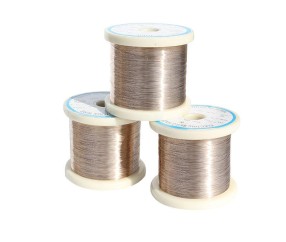6 Factors That will impact the Hardness of FeCrAl Resistance Wire
Release time:2026-01-08 Strike:833 Inquire Now
6 Factors That will impact the Hardness of FeCrAl Resistance Wire

The hardness of FeCrAl (Iron-Chromium-Aluminum) resistance wire can be affected by several factors, including its composition, manufacturing process, and operating conditions. Below are the key factors:
1. Chemical Composition:
Alloying Elements:
Chromium (Cr) and Aluminum (Al) increase hardness due to solid solution strengthening and the formation of oxide layers. Higher aluminum content can lead to increased brittleness and hardness.
Trace elements (e.g., carbon or nitrogen) can also influence hardness by forming carbides or nitrides.
Iron Content:
Variations in iron content can impact the ductility and toughness, indirectly affecting hardness.
2. Manufacturing Processes:
Cold Working:
Rolling, drawing, or other mechanical deformation during production increases dislocation density, leading to work hardening.
Heat Treatment:
Proper annealing reduces hardness by relieving internal stresses and recrystallizing the structure.
Quenching after high-temperature exposure may increase hardness due to rapid phase transformations.
Grain Size:
Finer grains (achieved through controlled cooling) result in higher hardness (Hall-Petch relationship).
3. Oxidation Layer Formation:
FeCrAl forms a protective aluminum oxide (Al₂O₃) layer at high temperatures, which can contribute to surface hardness. Prolonged operation in oxidative environments may alter hardness due to the evolution of this oxide layer.
4. Operating Conditions:
High-Temperature Exposure:
Extended use at high temperatures can soften the wire through recrystallization and grain growth.
Thermal Cycling:
Repeated heating and cooling can induce microstructural changes, such as precipitation hardening or embrittlement.
Mechanical Stresses:
Constant tension or vibration during operation may lead to strain hardening or localized hardness variations.
5. Surface Condition:
Surface Treatments:
Polishing or coating the wire may slightly alter the hardness by removing surface impurities or adding protective layers.
Oxide Layers:
A thicker oxide layer can create a harder surface but might lead to brittleness.
6. Environmental Factors:
Corrosive Environments:
Operating in a harsh chemical environment can degrade the alloy structure and reduce hardness over time.
Moisture or Contaminants:
Exposure to water vapor or chemical contaminants may affect the integrity of the protective oxide layer, indirectly impacting hardness.
By carefully controlling alloy composition, manufacturing parameters, and operating conditions, the hardness of FeCrAl resistance wires can be optimized for specific applications.
-
How to Apply for BIS Certificate India
Here is a clear explanation in English on how to apply for a BIS...
-

Alloy28 Stainless steel with 28% Cr and 3% Mo
🔧 UNS N08028 Stainless Steel – Overview and ApplicationsUNS N080...
-

Exploring the Applications of Resistance Wire: From Industrial Heating to Electric Vehicles
Resistance wire is a specialized material widely used in various...
-

How to Caculate the Nichrome80 Temperature
We’re super stoked about our Nichrome 80 wire, a go-to for high-...



